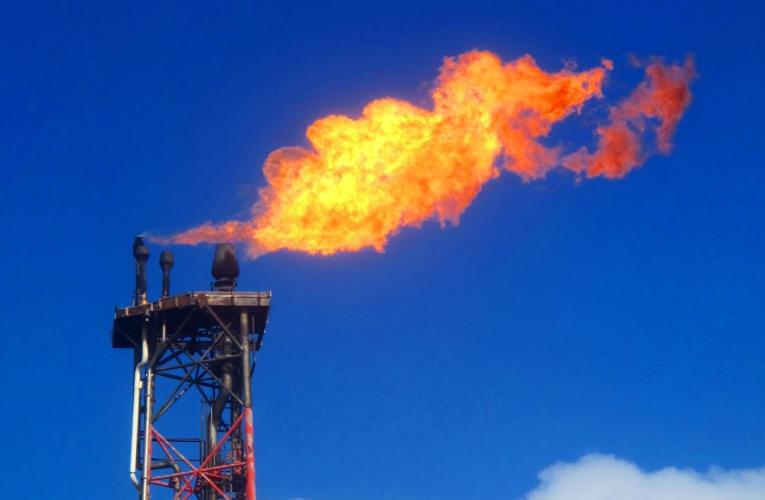Tim Lucas
(919) 613-8084
tdlucas@duke.edu
DURHAM, N.C. – Reducing emissions of methane, a short-lived but super-potent greenhouse gas, is the most cost-effective way to slow the rate of Earth’s warming in coming decades, a new United Nations report finds.
The report, led by Duke University’s Drew Shindell, reflects growing scientific consensus that curbing emissions of methane – which can be up to 80 times more potent at warming Earth’s atmosphere than carbon dioxide when it first enters the atmosphere – is essential to slow global warming in the short term and avoid the worst-case climate impacts that will occur if temperatures rise more than 1.5°C.
Most of the mitigation methods needed to achieve methane reductions already exist, are relatively low-cost, and often pay for themselves over time.
Because methane contributes to the formation of ground-level ozone, a dangerous air pollutant, reducing these emissions would also prevent 225,000 premature deaths and 775,000 asthma-related hospital visits, the report shows.
By slowing the rate at which Earth’s atmosphere is warming, they would additionally prevent 73 billion hours of lost labor from extreme heat and 26 million tons of crop losses globally each year.
“Cutting human-caused methane emissions would have profound climate, health and economic benefits, but we have to start now,” said Shindell, who is the Nicholas Distinguished Professor of Earth Science at Duke’s Nicholas School of the Environment.
“Our report identifies policies and approaches that governments, businesses and individuals can start working on immediately to reduce these emissions, armed with detailed information about the probable costs and benefits of each measure.”
The new report, which was produced by the United Nations Environment Programme and the Climate and Clean Air Coalition, was posted online on May 6.
Shindell and his team have also posted an interactive policy-support tool designed to help decision makers drill down into the data and assess the costs and benefits of different approaches to methane emissions reductions in specific sectors or regions.
The main sources of human-related methane are the fossil fuel industry, which accounts for 35% of total emissions; agriculture, which contributes 40%; and the waste sector, which produces 20%.
Using existing technologies and practices, these emissions could be cut by as much as 180 million tons, or about 45%, a year by 2030, the report shows.
“That would help us avoid about 0.3°C of global warming by the 2040s,” Shindell said. “And the good news is, we can achieve between half and two-thirds of these reductions by simply using best practices.”
In many cases, that means doing things as simple as plugging leaks in pipelines, not burning off or venting natural gas during drilling, and composting organic waste instead of sending it to landfills.
“There are no unsurmountable economic or technical barriers to prevent us from doing these things,” Shindell said. “It all comes down to political will.”
Additional measures that do not specifically target methane, like a shift to renewable energy, increased residential and commercial energy efficiency, and a reduction in food loss and waste, would reduce methane emissions by a further 15% by 2030.
“For instance, cutting food waste, improving how we feed livestock, and changing our own diets to include fewer cattle-based products could help keep 88 million tons of methane from entering the atmosphere each year,” Shindell said. “They’re small steps that add up.”
Eight Duke students contributed to the report. They are Karl Seltzer (PhD’20) and Muye Ru (PhD’21); Gray Li (MEM’21); and Krista Stark (BS’20), Jared Junkin (BS’21), Rithik Castelino, a rising junior majoring in environmental chemistry in 2023, and Alex Glick, a rising junior majoring in public policy and computer science.
The students’ contributions included tracking down and analyzing data on the effects of heat and air pollution on human health and analyzing methane emissions in the agricultural sector. They also helped align data from disparate studies into cohesive datasets, which greatly improved the team’s ability to produce accurate global and regional projections, Shindell said.
Yuqiang Zhang, a research scientist formerly at the Nicholas School, also contributed to the report.
The Duke team conducted the research with colleagues from NASA Goddard Institute for Space Studies at Columbia University; NOAA’s Geophysical Fluid Dynamics Laboratory; the National Center for Atmospheric Research; Nagoya University; the University of Reading; the Stockholm Environment Institute; Colorado State University at Fort Collins; the International Institute for Applied Systems Analysis; the Netherland Environmental Assessment Agency, and the Climate and Clean Air Coalition.
###



